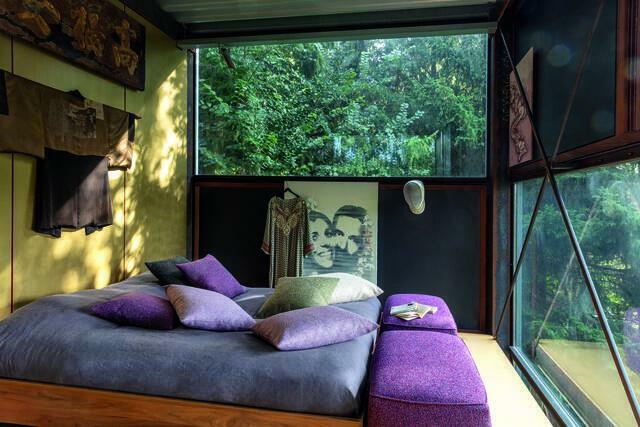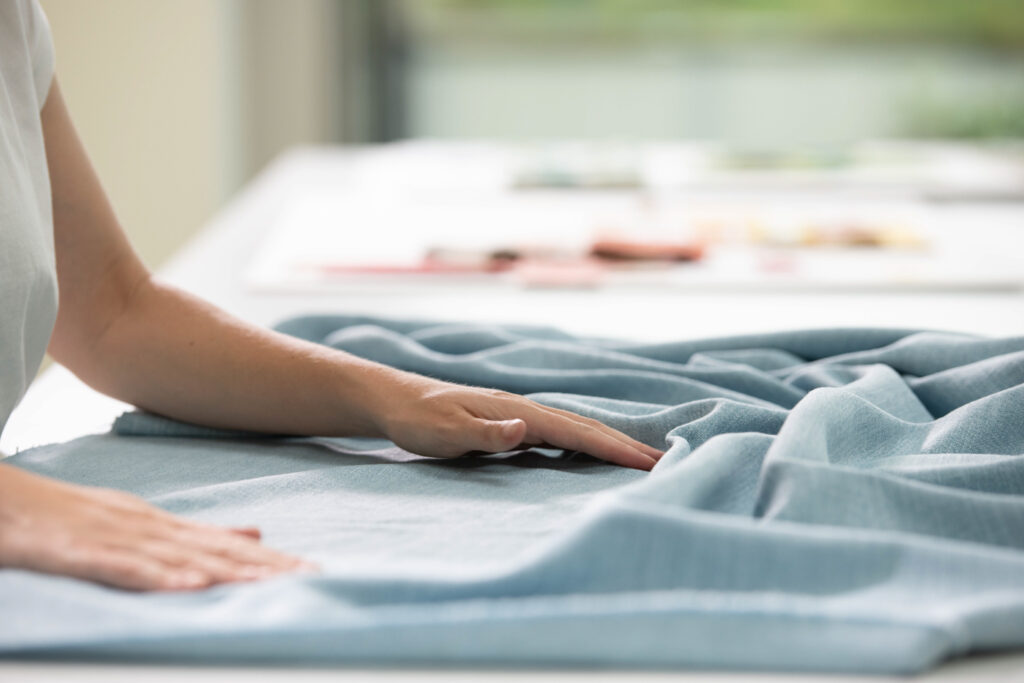Fabric Fundamentals: Discovering the Three Essential Disciplines in Textile Design
Let’s dive into the fascinating world of textile design with FibreGuard's amazing product development team as our guide.
In this article, we will explore the three primary types of textile design: printed, woven, and mixed media. Each of these techniques has its own unique characteristics, history, and application in the world of fashion, home decor, and art.
Whether you're a seasoned designer, an aspiring artist, or simply curious about the world of textiles, this blog post will provide valuable insights into the creative process and techniques behind these versatile and beautiful art forms.
So, let's embark on this colourful journey and discover the endless possibilities that the world of textile design has to offer!
Fun facts: inks and dyes in textile design
The various inks and dyes used to imprint aesthetic patterns onto fabric are key parts of these processes.
Different fabric constructions require different dyes, so this is also taken into account within each discipline of textile design.

For example, silk and wool fibres are dyed with basic dyes that bond to proteins. Synthetic fabrics often require disperse dyes, which bond well to synthetic materials.
Related read: How creative curiosity powers our stain-resistant performance fabrics
Printed Textiles: A Designer’s Wonderland
Printed textile designers work with home interiors and create patterns for carpets, wallpapers or ceramics.
They also work in the fashion and clothing industries, creating new collections. Finally, they are also found in the paper industry (designing stationary or even gift wrap).
There are four major categories of established and enduring printed designs: floral, geometric, world cultures & conversational.
- Floral designs include flowers, plants, or any botanical theme.
- Geometric patterns and designs include both abstract and more literal representations of shapes. Tessellations are a common geometric design theme.
- World cultures in printed textiles are often influenced by the geography, ethnicity, and history of a specific location.
- Finally, conversational designs are those that are difficult to categorise. These fabric designs could be inspired by images of popular icons from a certain time period or season—or they could challenge our visual perceptions in some way.

Closeup of a FibreGuard jacquard fabric with a turnkey pattern

Closeup of a FibreGuard fabric featuring a two-toned herringbone pattern woven with contrasting yarns
New technology transformed how printed textiles were designed
Computer-aided design software, such as Adobe Photoshop or Illustrator, has allowed each discipline of textile design to evolve new practices and processes. It has most influenced the production of printed textile designs—but by no means limited to them!
The use of digital tools has made it much easier to create repeating patterns or motifs.
In textile design, repeats refers to a design that is repeated throughout a print or fabric. Repeats can be small or large, subtle or bold. They create visual unity in a design and help make it more dynamic by repeating the same elements across different sizes on the page.
Digital tools have also eased the process of making patterns, by minimizing what's called "tracking", where an eye drawn to parts that expose discontinuity and reveal pattern.
The development of new printing tools and innovations in the textile industry have allowed for a more efficient, scalable, and sustainable textiles-printing process.
Related read: Biomimicry in Textile Design: How to Innovate with Nature's Inspiration
An insider peek into woven textile design
How does weaving work? The warp, a long vertical yarn onto which others are attached with either hand- or machine-made bindings (usually four) is interlaced with the weft, a horizontal strand that is woven over and under each row to create fabrics.
Today, commercial woven textile designs are usually created using mechanised or computerised jacquard looms.
Through weaving it's possible to create different textures, sizes, and colours in your finished fabrics by using various types of yarn, including anything from cotton and linen to synthetic fibres like polyester or olefin.
How woven textiles are designed
First the designer outlines the final design. They have to consider:
- The sequence of threading, traditionally drawn out on graph paper known as a point paper
- The weave structure that will affect the appearance of a fabric
- The colour of the design
Let's unpack that:
First the textiles designer outlines and visualises the sequence of threading. This is traditionally drawn on graph paper known as point paper.
The threading draft is the instruction that tells you how you need to thread your warp for a specific pattern. It is written horizontally, and is usually presented either on a grid or on something that looks a bit like a stave in music. - Cally Booker, Understanding the Threading Draft - Weaving Space
The designer also considers the weave structure that will affect the appearance of a fabric. The two most common types of weaving processes are plain and twill.
- Plain weave, in which yarns form tight alternating patterns that are both strong and flexible.
- Twill weaves, which are also common, alternatively use diagonal lines created by floating the warp or the weft to the left or the right. There are many common and recognisable twill patterns, including herringbone.
Beyond weave structure, colour is another dominant aspect governing woven textile design.
Designers will typically choose two or more contrasting colours that they'll weave together in patterns based on the sequence of threads created by their chosen technique.
Did you know? The final colour of a fabric design is also affected by the size of yarn used to weave it. Fine yarns create fabrics that reflect light differently than those made from coarse yarns: finer fabric reflects light more strongly, giving it a stronger colour.
Related read: The Definitive Guide to Choosing Outdoor Textiles
The multifaceted world of mixed-media textile design
Mixed media textile design is a creative and complex artform.
Designs are created using various fabric manipulation processes, including embroidery, pleating, appliqué or quilting.
Embroidery and quilting
Embroidery is a form of decorative needlework in which designs are made by sewing pieces of thread onto fabric.
Embroidery, like printed textiles, gives the designer a wide range of artistic possibilities.
There are a huge number of embroidery stitches, including straight stitches, satin stitches, chain stitch and many more.
Industrial machines have made it possible to produce embroidered fabrics quickly and efficiently. Hand stitching is still popular, however-especially among craftspeople interested in fine arts. Explore the V&A collection of over 700 needlework samplers ranging from as early as the 1400s, to pieces stitched in the 20th century.

The revival of quilting and padded textures is a hot topic right now among fashion designers and architects. This kind of textured textile has moved into other parts of the design world: including ours. Read more in our blog post: All eyes on quilted textures trending in upholstery

Quilting is a traditional technique that uses layers of cloth to create a quilt. It frequently incorporates scraps or heirloom fabrics.
The quilting process involves sewing together the individual pieces of fabric, then adding padding and a top layer before stitching everything together again. Quilting is most often used for making bedspreads or blankets, but it can also be applied to clothing and upholstery.
Quilts often feature geometric and collage designs pieced together from different textiles that have contrasting textures and colours.
Quilting has a rich history with a global reach
Quilts have long been used as a medium for artists to express personal or communal narratives. Two examples:
- The Hmong people are an indigenous group in East and Southeast Asia, known for their rich textiles history. The most well-known form of modern Hmong embroidery is the story cloth. These embroidered quilts tell the stories of early Laotian refugees, who focused on military occupation and forced migration. Learn more: The fabric of memory: Story cloth as art and history for Hmong in USA
- The AIDS Memorial Quilt was first displayed on October 11, 1987. With 1,920 individual panels—one for each person lost to the disease—the quilt is a moving and powerful memorial to those who have died from AIDS. Since then, the AIDS Quilt has accumulated more than 50,000 panels and is available to view online.
Related read: The anatomy of great textiles

Are you passionate about fabrics too?
From the intricate patterns of printed textiles to the tactile richness of woven fabrics and the boundless experimentation of mixed media, each type of textile design has its own unique charm and appeal. As we've explored these three primary techniques, we hope to have inspired you to appreciate the artistry and craftsmanship behind the fabrics that surround us in our daily lives.
Now that you've gained a deeper understanding of printed, woven, and mixed media textile designs, we encourage you to continue exploring the fascinating world of textiles.
Be sure to check out the rest of our Fabrics Academy articles for more in-depth knowledge, tips, and inspiration to fuel your passion for textiles. Happy exploring!